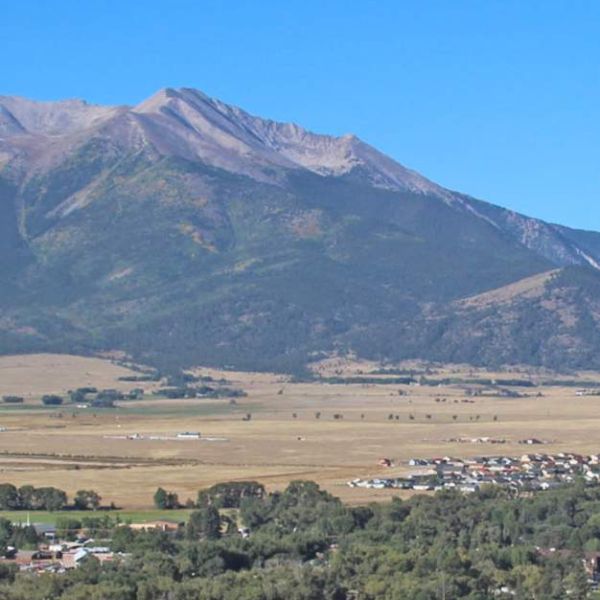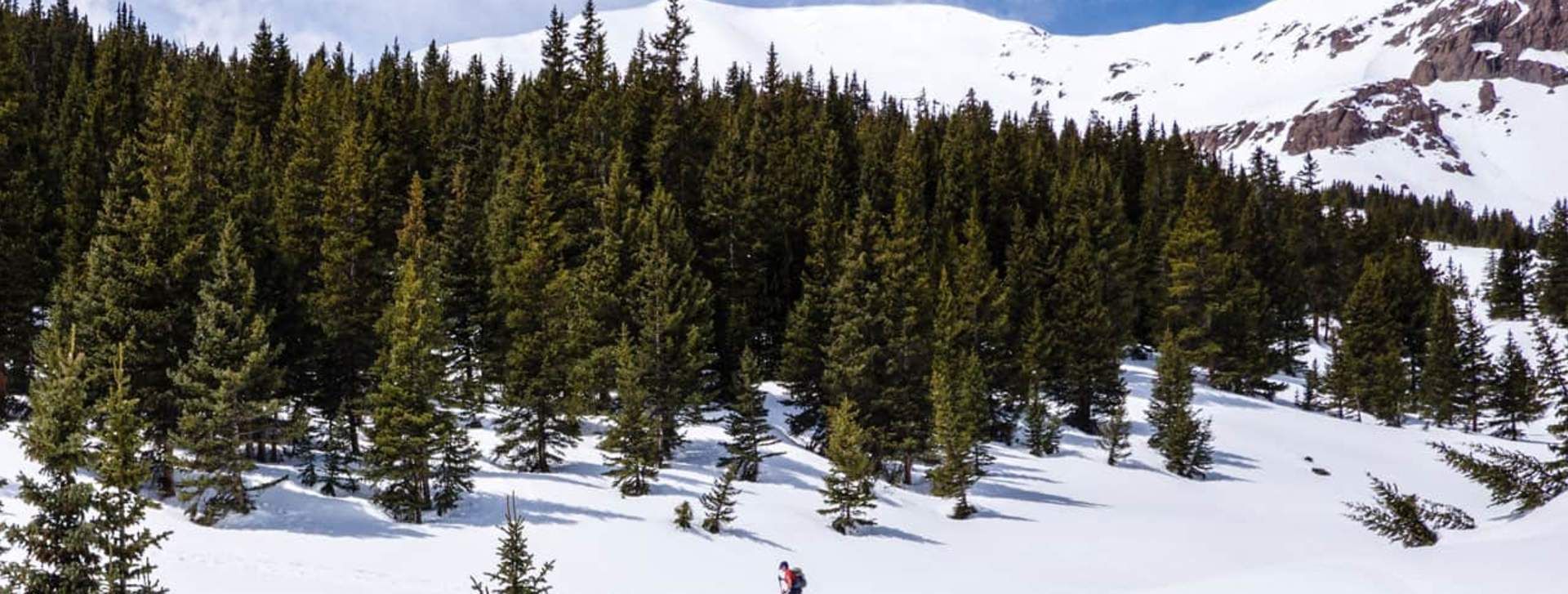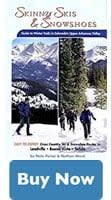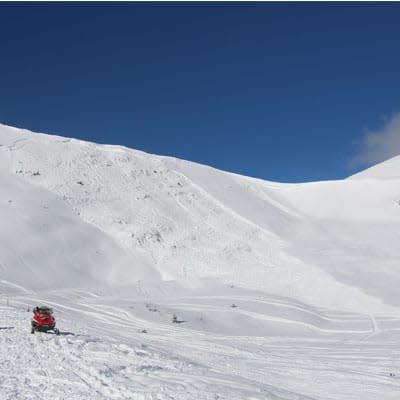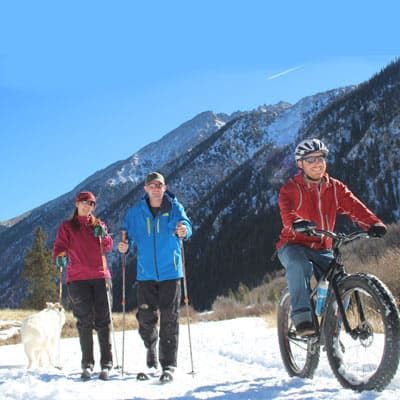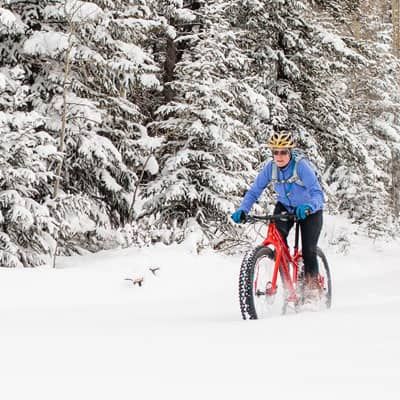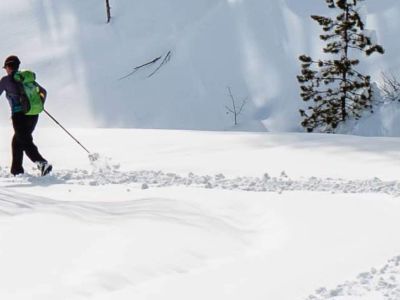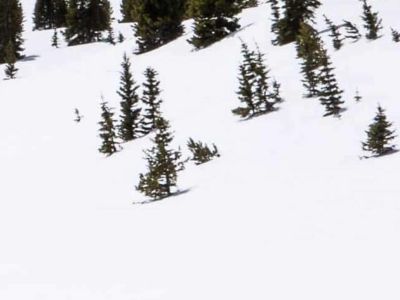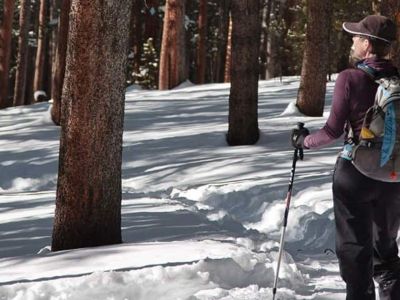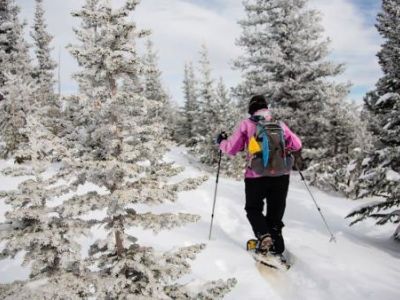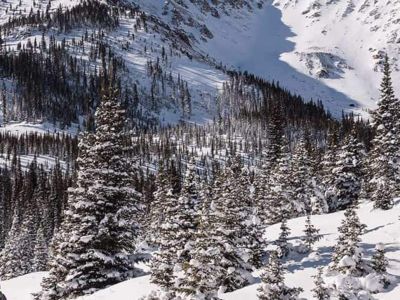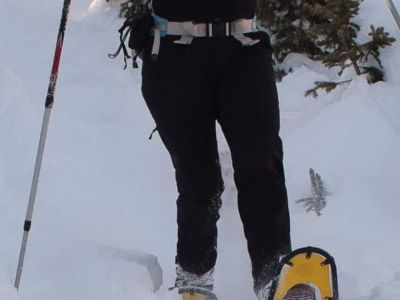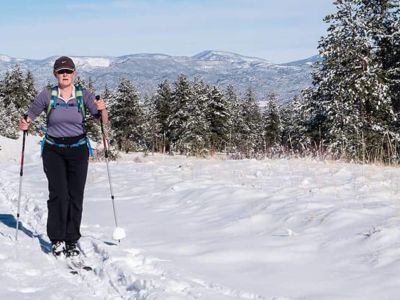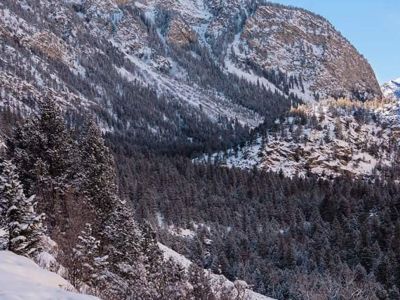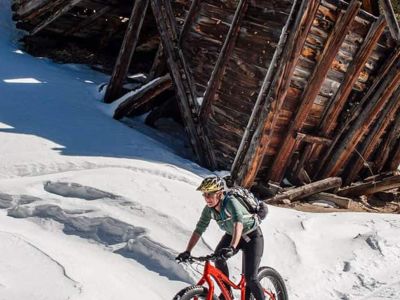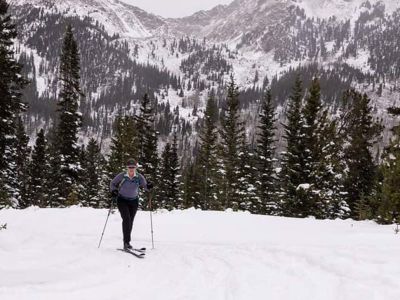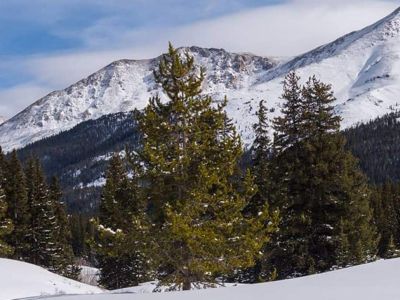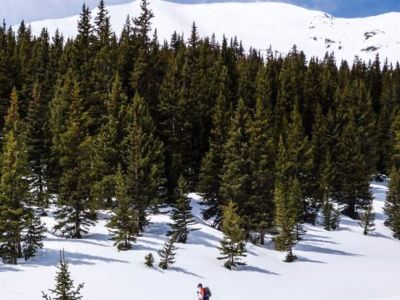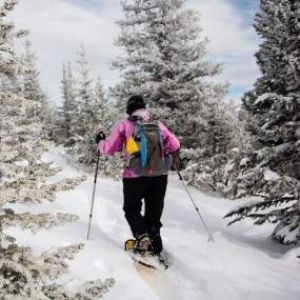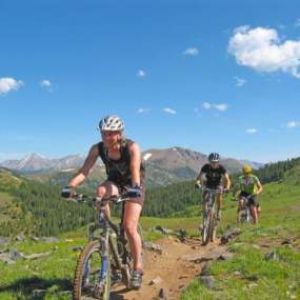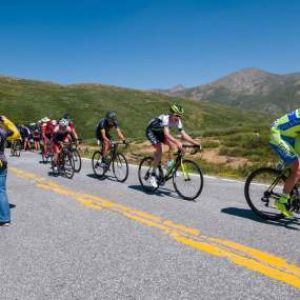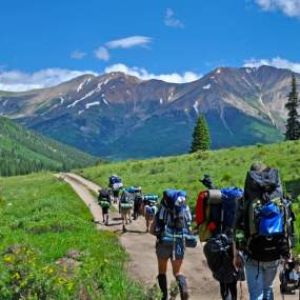GRAHAM GULCH
Twin Lakes & Independence Pass
Published with permission from the guide book:
Skinny Skis and Snowshoes – Guide to Winter Trails in Colorado’s Upper Arkansas Valley by Nate Porter and Nathan Ward.
This guidebook gives detailed information on 25 of the best backcountry ski and snowshoe routes in the Upper Arkansas Valley, with trails for every ability level. If you count all the options presented for each trail, the actual number of routes is closer to 60 without even counting the individual trails at the Nordic centers – that is a lot of skiing. If you’re insatiable and need more, look at the sections titled: Other Areas to Explore. Be insatiable.
The Graham Gulch Trail accesses one of the most scenic alpine basins in the valley with a stunning steep headwall at the top of the route. The top of the headwall is the Continental Divide. The steep trail through the giant pines feels mysterious and the views stun the eyeballs when you climb above treeline. Pick a clear day, bring lunch, a bottle of wine and a nice date (not a bad date) to enjoy some of Colorado’s best alpine scenery.
Trailhead Access: Drive 20 miles north of Buena Vista or 15 miles south of Leadville on US 24. Turn west on CO 82, following signs to Twin Lakes and Aspen. Drive 16.8 miles to Graham Gulch, on the left side of the road. This is not well marked, but it’s the last left before the winter closure. The road from US 82 to the trailhead is only 0.1 mile, but may be snowy and slippery, so park on the left side of the highway if you don’t have 4WD.
Location: Independence Pass
Distance: 3.8 Miles – Out & Back
Travel Time: 1 – 2 Hours
Type of Trail: Road & Singletrack
Aerobic Level: Moderate
Technical Difficulty: Ski – Advanced; Shoe – Intermediate
Avalanche Danger: This route crosses an avalanche path at treeline and above. Use extreme caution during periods of high hazard
Elevation in Feet: Low Point 10,477 ft.; High Point 11,640; Climbs/Descends 1,163
Land Status: USFS
Maps: Trails Illustrated #127; USGS Independence Pass
Notes: This short and moderately steep trail ends just below the Collegiate Peaks Wilderness area, so you can bring the dogs.
Advanced Option: Since this tour is short, add to it by snowshoeing the South Fork of Lake Creek or skiing up the Independence Pass road from the winter closure.
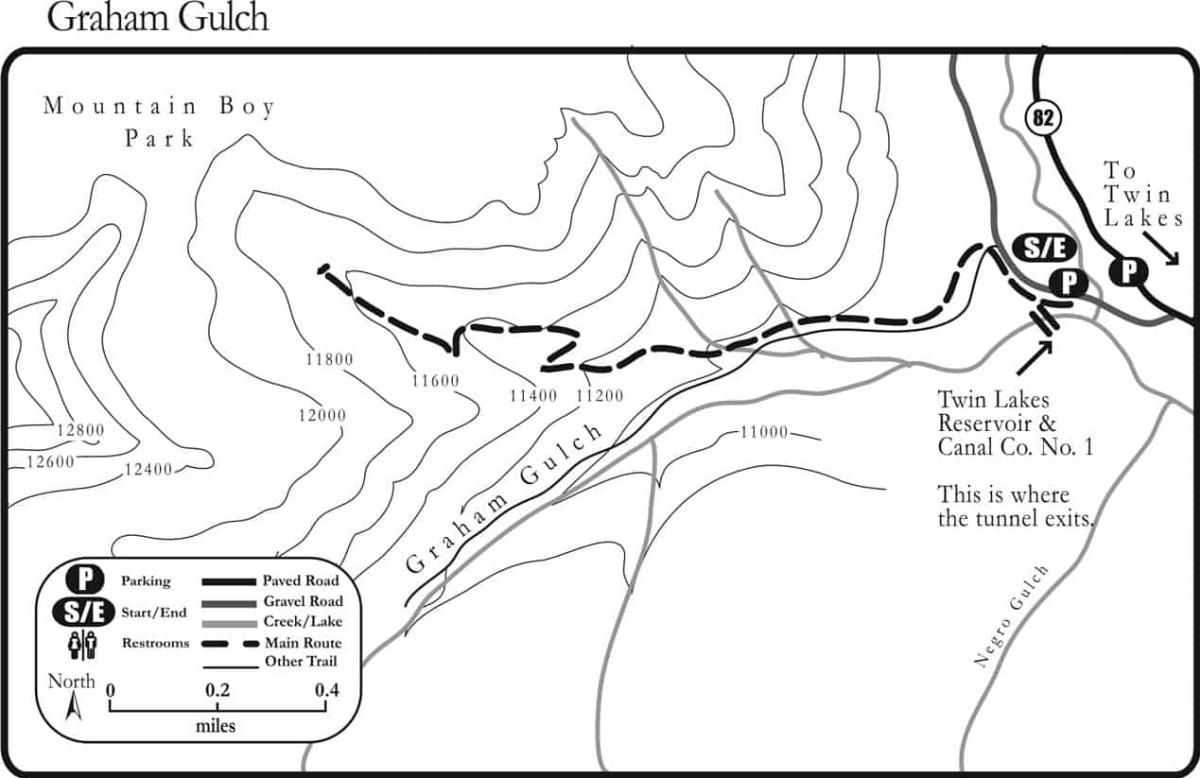

Graham Gulch Mileage Log
0.0 Start up the road to the right of the creek and hydro-tunnel (39º04.92N, 106º32.45W). Stay right 40 yards up the trail, past a “Closed to Vehicles” sign.
0.7 There may be a split in the trail; stay to the right.
1.2 Switchback right.
1.3 The trail crosses a big south facing avalanche path (39º04.87N, 106º33.54W). Stop here if the avalanche danger is high. If you continue, pay attention to clues for unstable conditions.
1.5 The trail crosses the creek and goes uphill left (39º04.89N, 106º33.69W).
1.6 About 40 yards uphill from the creek, look for a road that goes right, parallel to and above the creek on the south side through the trees (39º04.84N, 106º33.68W). It’s a slight bench feature leading into the basin above. You are exposed to avalanche terrain from here, so proceed only if conditions are good.
This is where this route leaves the Graham Gulch road. Graham Gulch continues straight ahead, but it’s not what you want.
1.9 Enter a high basin surrounded by peaks (39º04.98N, 106º33.95W) and head for a tree island at the end of a small rib coming down from the left. This is a good place to soak up the sun and views. Turn around and enjoy the trip down.
Ski & Snowshoe With Care
Backcountry travel is a physically strenuous activity with many risks and dangers. Hazards, natural or manmade, whether noted in this book or not, can be encountered at any time, under any situation. As a backcountry traveler we assume you know your personal abilities, limitations and have a comprehensive background in avalanche safety.
This book represents nothing more than a guide to routes and is not meant to replace your common sense, your ability to navigate in the wilderness or your ability to travel in the backcountry safely.
The mileages, routes and waypoints listed in this text are only suggestions. There may be variances and changes, you may get lost. We recommend that everyone use a global positioning system and topographical map to navigate.
Most routes in this text are located on public land, but some trails pass through or adjacent to private land. Respect the landowner’s rights and obey all signs regarding trail use.
Neither the authors, nor the publisher, nor anyone else mentioned in this book are responsible or liable in any way for any accident, injury or any action brought against anyone traveling any route listed in this book. All backcountry travelers and their companions assume responsibility for themselves. Explore at your own risk, and always tell somewhere where you are going and when you’ll be back.
WINTER BE PREPARED
We want you to have a safe and enjoyable trip into Colorado’s backcountry. Be prepared it could be a long walk out. Be sure to read this list of equipment you should bring on your ride along with tips to make your biking trip more enjoyable.
WINTER TRAIL ETIQUETTE
The winter backcountry is becoming more popular in the Upper Arkansas Valley, which means you need to think of your neighbors while out on the trail. There are no hard and fast rules, but please consider the following:
CORSAR CARD
If you require search and rescue services, it can be costly. Buy a Colorado Outdoor Recreation Search and Rescue (CORSAR) card to protect yourself. Funds from the CORSAR program go into the Colorado Search and Rescue (SAR) Fund. If a CORSAR card holder becomes lost or injured in the backcountry, the Colorado SAR Fund pays eligible search and rescue expenses.
SNOWSHOEING & NORDIC SKIING ROUTES
